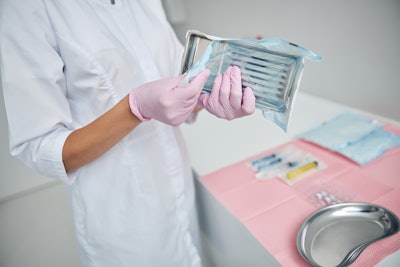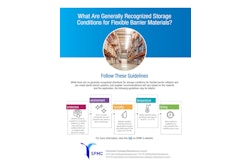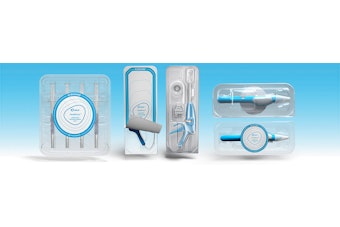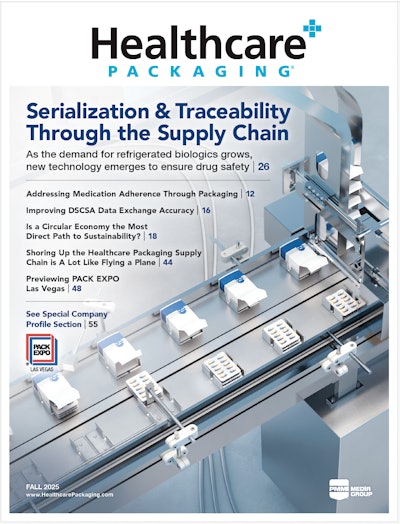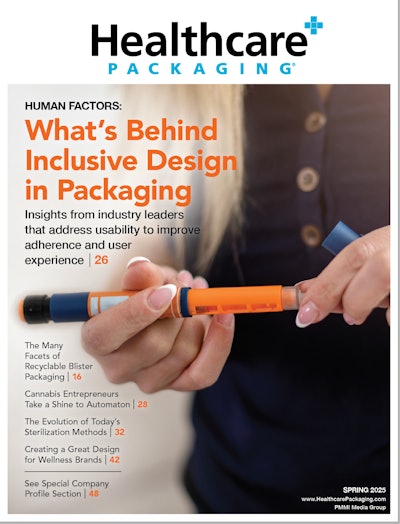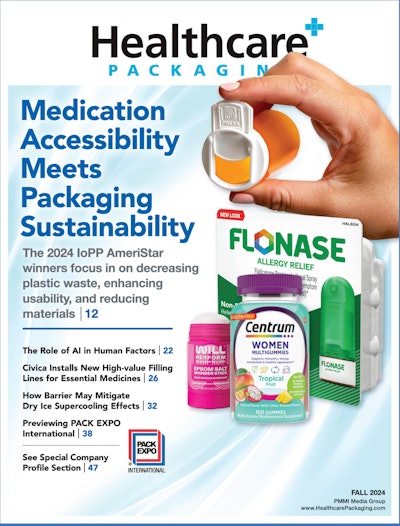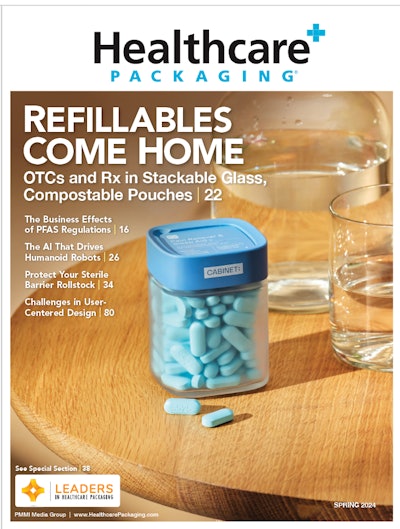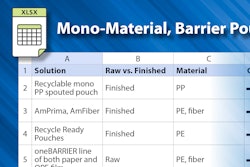Key takeaways:
- There’s still a growing concern about the exposure to EO with medical device sterilization.
- Regardless of sterilization type, securing vendors has become increasingly more difficult over the past 5-10 years.
- In some cases, X-ray is the more preferred process over EO as well as gamma, which requires the difficult-to-source Cobalt-60 radioactive isotope.
Once released into the air, ethylene oxide (EO) becomes a gaseous wild card. At high-enough concentrations, the colorless, flammable vapor produces a sweet scent that would be easily noticeable. But due in part to increased regulatory scrutiny by the U.S. Food and Drug Administration (FDA) and U.S. Environmental Protection Agency, it’s emitted at smaller amounts that are not as easily detectable. Although it can trigger acute symptoms of respiratory irritation, such as coughing, wheezing, and shortness of breath, short-term exposure to EO does not typically cause significant health maladies — which ironically contributes to the danger it presents to human health and the planet when it’s used to sterilize medical devices.
“There’s still a growing concern about the exposure to EO with medical device sterilization,” says Christy Norman, senior director of quality and regulatory compliance at BioLab Holdings, Mesa, AZ, a biotechnology company that develops and manufactures wound care products.
Many of today’s stakeholders — from quality assurance professionals to product managers and other executives — are grappling with how to meet the financial challenges of continuously shifting regulations, the search for EO alternatives, and supply chain complications, such as fewer third-party vendors to choose from and processing bottlenecks. While some promise has been seen in the development of new sterilization modalities, there’s concern about how the cumulative fallout will affect business and patient safety.
A constant search for vendors
At BioLab Holdings, Norman and her colleagues had grown accustomed to collaborating with dual third-party vendors to facilitate electron-beam (e-beam) sterilization of their amniotic membrane products. Having two active vendors had proven to be a beneficial approach to ensuring the availability of their products. “We determined that it was necessary to carry two vendors in the event that we had any issues that tend to come up, such as needing more product and one vendor can’t meet capacity or if a vendor were to be audited or shut down by a regulatory agency,” Norman explains. “It’s best to have dual suppliers for critical components of your processes.”
More recently, BioLab had been forced into a solo-vendor status due to service logjams, increased costs, and an inability of the organization it previously worked with to provide the necessary sterilization support for its product. While there were always pros and cons to the management of multiple suppliers, Norman says she is actively looking to replace that secondary vendor. Finding a vendor who can accommodate the company’s product needs at this time has been difficult.
“There’s not as many vendors out there today who are as experienced and able to provide you with cost-effective solutions,” says Norman. “And there are times that you have to extend your validation window of how long you have that processed product waiting until it gets sterilized. That’s the impact of not having enough people in the industry with the knowledge to support the industry with cost-effective sterilization solutions.”
Prolonging timelines to accommodate vendor complications invites multiple scary scenarios, says Norman, including the possibility of failing to meet storage temperature requirements to prevent bioburden. Another logistical challenge that she faces is that the company’s products are not suitable for EO due to their material properties.
“It’s been known that EO can significantly alter the tissue, biological properties and structure, and clinical performance,” she said. “EO sterilization can also reduce or inactivate the bioactive molecules. It is not a valuable sterilization option for amniotic membrane products.” E-beam has less impact on growth factors, anti-inflammatory cytokines, and antimicrobial peptides. While some organizations elect to instead use gamma irradiation, which is also less impactful to the biological makeup of amniotic membranes, Norman said e-beam has always been the preferred route for BioLab.
Regardless of sterilization type, securing vendors has become increasingly more difficult over the past 5-10 years, she said. “I think it has to do with regulatory oversight,” says Norman. “In the last five years, tissue regulations have changed. And there’s premarket approval submissions, biologics license application submissions, and other considerations by the FDA that were not the case five years ago.”
To mitigate these challenges, Norman says she’s become quite active with peer conversations while attending industry conferences and other stakeholder events.
“There’s always opportunities to network so that you can share contacts with [administration] for potential new vendors,” she said. “Being very active and collaborative in the industry, and utilizing the tools that are public knowledge to seek out other vendors, can be valuable.”
Handling the hybrid approach
As the head of global product management for polymer solutions at SCHOTT Pharma, a drug containment solutions company that specializes in delivery solutions for injectable drugs, Christoph Zauner says that he also experiences difficulties in sourcing third-party partners, especially when considering the need to maintain a hybrid style of sterilizing — with some customer products being sterilized in-house while others require offsite sterilization. “It’s always a little tricky to coordinate because you have to qualify those members,” says Zauner. “You need to make sure their sterilization processes are correct and are ensuring sterility.”
For Zauner and his colleagues, the route to sterilization is dependent on product type. “We offer three approaches to sterilization across three product categories so that we can utilize the best fit for each product,” he said.
For cartridges, steam sterilization is used while EO is necessary for glass syringes and polymer products are sterilized by X-ray or gamma, depending on each customer’s needs. All steam sterilization is performed onsite while X-ray and gamma services are coordinated through outside vendors. Due to the ongoing environmental and healthcare concerns, Zauner says X-ray is the more preferred process over EO as well as gamma, which requires the difficult-to-source Cobalt-60 radioactive isotope. “We always try to select the sterilization method that is best for the material, the environment, and our customers,” says Zauner.
Given the current supply chain and regulatory landscape, Zauner says that SCHOTT Pharma chooses to employ as many third-party vendors in its network as possible to avoid bottlenecks, and other issues, as well as to achieve the standard six-log reduction as easily as possible.
There’s also an additional layer of safety protocol that must be followed when syringes are involved. “You have to make sure that the syringe is pulled from the sterilization free of EO,” says Zauner. “It’s never ‘completely free,’ but when it comes to human health, there are very strict standards in terms of EO residuals.”
One who has worked in the pharmaceutical industry since 2005, Zauner says he is optimistic about the prospects of safer, effective alternatives coming to fruition in the not-too-distant future.
“As an industry, we’re trying to identify different sterilizations that are safer and more environmentally friendly,” he said. “I believe there will be changes away from EO. If any regulation burdens are there, you can usually overcome them by proving that any new sterilization method is ensuring sterility at the same technical specifications.”
The promise of future alternatives
This past December, the FDA hosted the last event in its series of sterilization town halls as part of its “innovation challenge” to implement alternatives. There are reportedly various types of alternatives to EO that are currently being tested, including methods that involve nitric oxide (NO), vaporized hydrogen peroxide (VHP), nitrogen dioxide, carbon dioxide in a supercritical fluid state, chlorine dioxide, peracetic acid, and ozone.
At Sterile State LLC, a technology research and development company based in Farmington Hills, MI, chief executive officer Kurt Yockey and his staff are reportedly close to seeing their NO sterilization modality reach FDA approval. “We’ve done thousands of tests,” said Yockey, who’s background is in law litigating high-exposure medical malpractice, product liability, and employment claims. “The safety testing that we’ve done for the FDA is extensive. We don't have our clearance yet, but there is no contest at this point about safety. We have found nothing that we can't sterilize, and we have found nothing that gets adversely affected by the system.”
To undergo the sterilization process, medical devices are placed into a Ziplock-like bag that is coated with a polymer that releases the NO. The bag is then sealed, and the device is sterilized in minutes to hours before being shipped in the same bag.
“There’s no machines, no maintenance, no downtime when machines malfunction,” says Yockey. “Electronics are unaffected, batteries are unaffected, and all commonly used packaging materials are unaffected by the gas.”
The Sterile State system also eliminates shipping to regional sterilizers and the cost associated with Tyvek, in most cases, says Yockey. As of early July, Sterile State had tested more than 60 medical devices among nearly 40 manufacturers, with results showing no material degradation.
Among those considering the eventual move to NO is SCHOTT Pharma, which is also reportedly considering VHP. SCHOTT officials say they continue to monitor customer preferences and industry trends as interest in alternative sterilization methods has increased over time along with regulatory standards.
While there’s no official timeline for the modality’s approval, Yockey says he looks forward to a time when his organization will have the opportunity to assist those who are facing challenges such as identifying vendors, avoiding bottlenecks, or just simply looking to abandon the use of EO. “We hear that some have had a difficult time continuing to get complete sterilization with the advent of the new regulations on EO and to try to make it a safer process,” he said. “Some have had a difficult time getting new products into a chamber because those chambers are full every day. And there are companies that pay for sterilization time in chambers that they don't think they're going to need in case that they do. We can solve those issues right away.”
